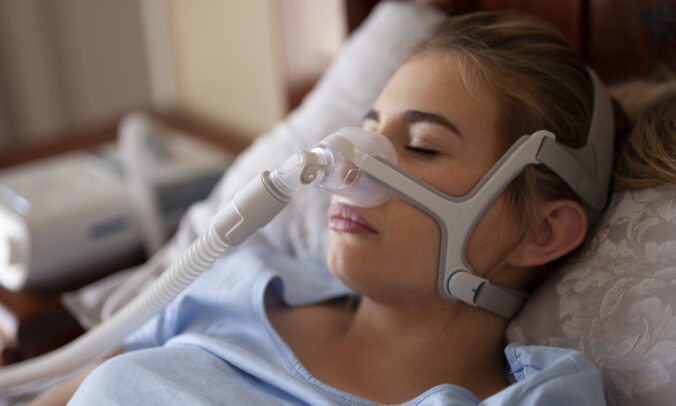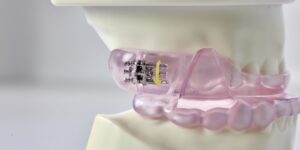Cleaning doesn’t have to wait until the warmer months, even if it’s still winter. Maintain the cleanliness of your equipment, especially if you use CPAP masks. In the course of the night, it constantly pushes air through your body. You should routinely carry out the following tasks to keep it in excellent condition:
Once a day CPAP masks cleaning
Empty the CPAP humidifier’s water chamber and remove any surplus water from the tubing to stop the formation of bacteria. Since germs may easily build up on the surface of your CPAP machine, be sure to wipe it out once each day. Finally, use the handy cpap mask wipes to completely clean the interior of your CPAP mask.
Maintenance of CPAP masks every week
Give your CPAP mask, tubing, and reusable filter a good wash in warm, soapy water once per week or so. Be sure it is thoroughly dry before applying it once again. Use of soft soaps, such as baby soap, Dove, or Ivory, produces the best results.
Once a month CPAP cleaning
We suggest wiping down the whole machine with warm water once a month. That requires removing it, cleaning the humidifier’s inside, and then placing it back on the nightstand. Then, replace your disposable filter.
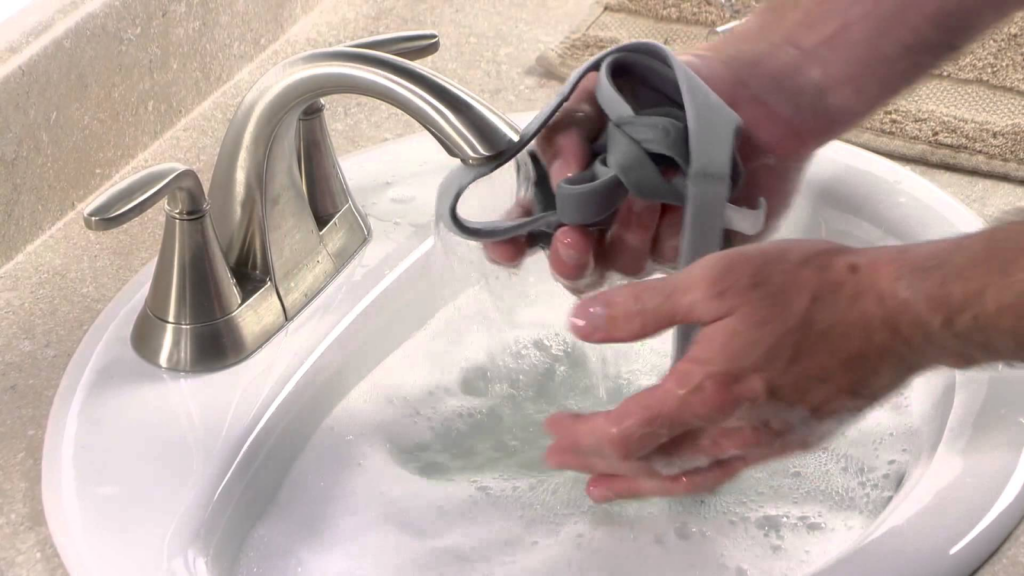
New CPAP masks for 3 to 6 months
For sanitary and practical reasons, we suggest changing your CPAP mask tubes every three months and your CPAP masks every six months. If you are eligible, as you are with most insurance plans, check your policy and benefit from this routine replacement. Learn about the impact of aging on vision and how to maintain healthy eyes after cataracts surgery as you get older by clicking here.
Continuous positive airway pressure (CPAP) full face masks need to be cleaned often to prevent the growth of bacteria. Contrary to certain device recommendations, individuals often clean CPAP masks using water and gentle cleansers. Additionally, even though automatic CPAP full face masks cleaners are available, the Food and Drug Administration does not endorse them (FDA).
The upper airways get blocked when a person is asleep if they have obstructive sleep apnea (OSA), which interferes with both breathing and sleep. OSA symptoms include daytime fatigue, loud snoring, and headaches. Additionally, it increases the risk of stroke, heart disease, and neurological conditions.
However, individuals may benefit from using positive airway equipment like a CPAP full face mask to manage OSA.
This page discusses CPAP masks, including what they are, whether they should be cleaned, how to clean them, and other issues.
Should CPAP masks be cleaned?
By applying pressurized air to the user’s airways to keep them wide open, a full face CPAP mask helps people breathe better while they sleep. To keep the compressed air moist while using a CPAP mask and avoid having their nasal passages dry up, some individuals do so.
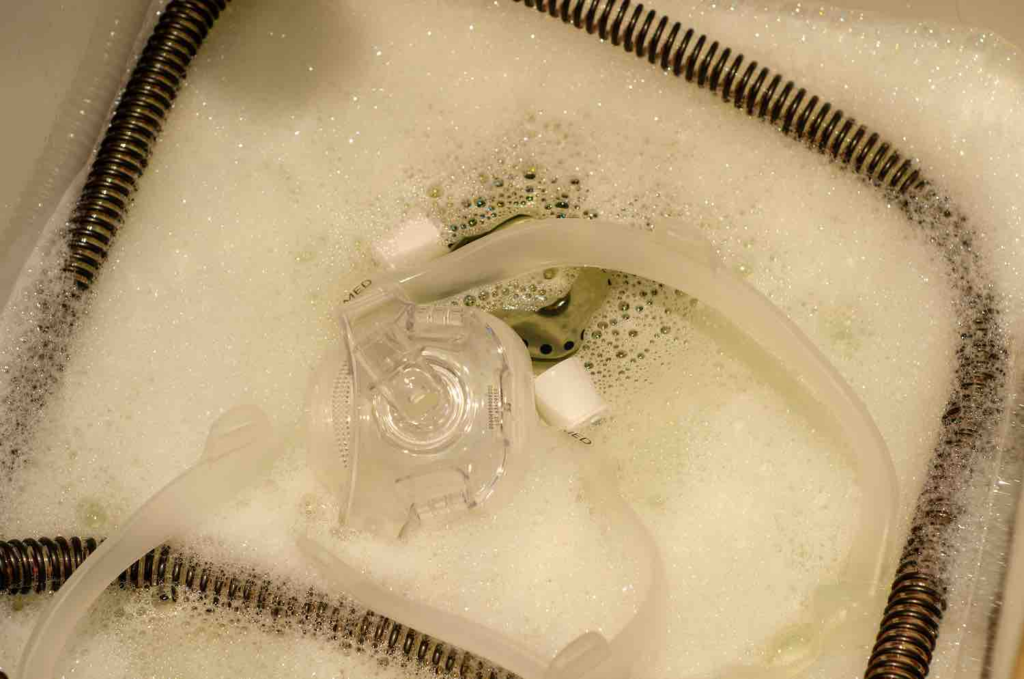
A CPAP and each of its parts need regular cleaning. Because it takes time, the need for automatic CPAP cleaners has surged. None of these cleaning equipment have been approved by the FDA, which regulates the manufacturing of medications, food, biological products, and medical devices.
A warning to this effect was released in 2020 by The FDA, encouraging customers to clean CPAP masks by hand and in accordance with manufacturer instructions.
Taking care of CPAP masks
Both bacteria and fungi, as well as viruses, may thrive in CPAPs. Additionally, they might get inside with pollen, allergens, dust, mud, and mold. If these contaminants aren’t eliminated, CPAP users may get serious illnesses. They could also lead to the appliance malfunctioning and smelling bad.
The finest cleaning procedures for CPAP full face mask types are those recommended by the manufacturer. Warm water and a sensitive cleaning, such baby shampoo or a mild detergent, are often required for this. Additionally, some manufacturers suggest using water and white vinegar in an equal ratio.
The following CPAP parts should be cleaned:
- Humidifier,
- CPAP machine
- A mask or nasal cushion
- Tubing
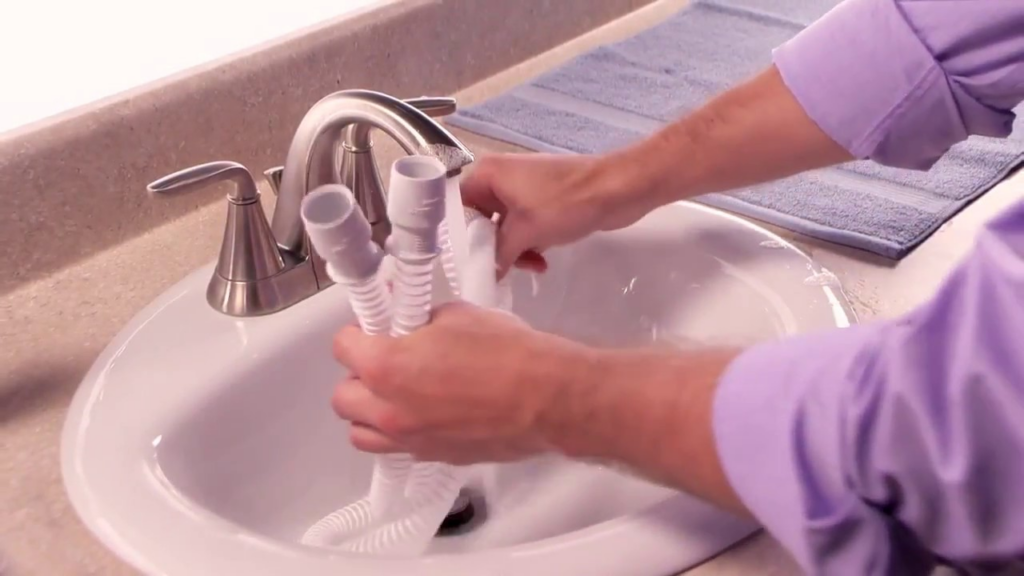
To clean a CPAP, experts suggest using the following procedure:
Each day:
- Remove the water from the humidifier and refill it with just distilled water.
- To clean the nasal pillows or the mask, use a gentle detergent.
Each week:
- Wipe the CPAP machine with a soft cloth. Never let it go under water.
- Thoroughly clean the humidifier chamber. Aim to let things air dry.
- Thoroughly clean the tubing. Let it dry naturally.
- Disassemble the nasal pillows, mask, and tubing. After that, let it to air dry.
- Hand wash the headgear. Rinse, then let to air dry.
- If the device contains a washable filter in the shape of a sponge, do so.
Some experts suggest washing the mask, water chamber, and tubing every day using hot water and soap. Some suggestions include soaking the water chamber in soapy water for 10 minutes each day.
The American Sleep Apnea Association warns against using the following for cleaning their CPAPs:
Cleaners with abrasives, antibacterial properties, bleach, and alcohol-based formulas

How are CPAP cleaners used?
Automatic CPAP cleaners may be divided into two main categories: those that use UV light and those that use ozone as the main cleaning agent. The FDA hasn’t authorized either, however, to clean CPAP masks.
This suggests that there is no data or evidence to back up the FDATrusted Source’s assertions that these specific CPAP cleaners are secure or efficient in eradicating germs. Additionally, the committee has received concerns that some people had headaches, dyspnea, and asthma episodes after utilizing an ozone-based CPAP cleaning.
Health problems and safety issues
If a CPAP is not maintained clean, using one might make people ill. If the water in the CPAP reservoir is not changed often and is not replaced with fresh, distilled water, bacteria and mold may grow and cause sickness. It can also exacerbate pre-existing issues. The oil and bacteria on the skin may cause recurring skin irritation or disease as a consequence of the mask.
The FDA has not authorized any automated cleaner for CPAP cleaning. Testing by the FDA revealed that ozone-using equipment also created hazardous levels of ozone gas. It’s possible that CPAP masks don’t always get enough UV radiation from the cleaning instruments that sanitize them.
By adhering to a few simple maintenance guidelines, you can prolong the useful life of your equipment.
Avoid using harsh cleaning agents and detergents.
Avoid using any cleaning agents that are too concentrated or too harsh. Likewise, stay away from perfumed or highly scented goods. Dawn dish soap is what we advise using.
Never put the CPAP machine or any of its components in the dishwasher or washing machine as this might result in damage.

Add more distilled water
Minerals in regular tap water will accumulate and settle in the equipment over time. For this reason, it’s crucial to fill the humidifier tank exclusively with crystal-clear, distilled water. Another tip is to empty the tank of any remaining water every morning and then re-fill it with distilled water before using it at night.
Regularly clean and replace filters
Some kinds of CPAP masks use filters to clean the air. To determine how often these filters need to be cleaned and changed, see the instruction manual. They should be rinsed often, blotted dry, and given time to fully air dry. Some models need new filters as often as once or twice a month.
Service it as necessary
Take your CPAP full face mask to your equipment provider to get checked out if your sleep apnea symptoms seem to be becoming worse or if it seems that it is not functioning properly.
As Required, Replace Parts
Components for CPAPs are not built to last a lifetime. Replace the full face mask, tube, and headgear whenever you see any symptoms of wear or cracking. The majority of manufacturers suggest changing these components annually, even in the absence of obvious deterioration.
Final thoughts
While they are asleep, people with OSA often stop breathing. Although it increases the risk of developing chronic health conditions, CPAP treatment may be used to manage it.
Cleaning CPAP masks carefully and often is necessary. The majority of manufacturers suggest hand-cleaning the device’s different components using water and gentle cleaners.

